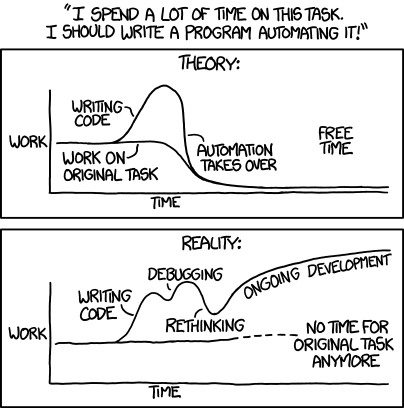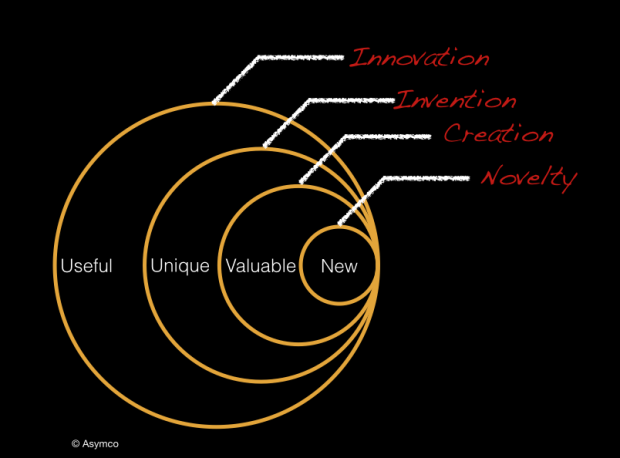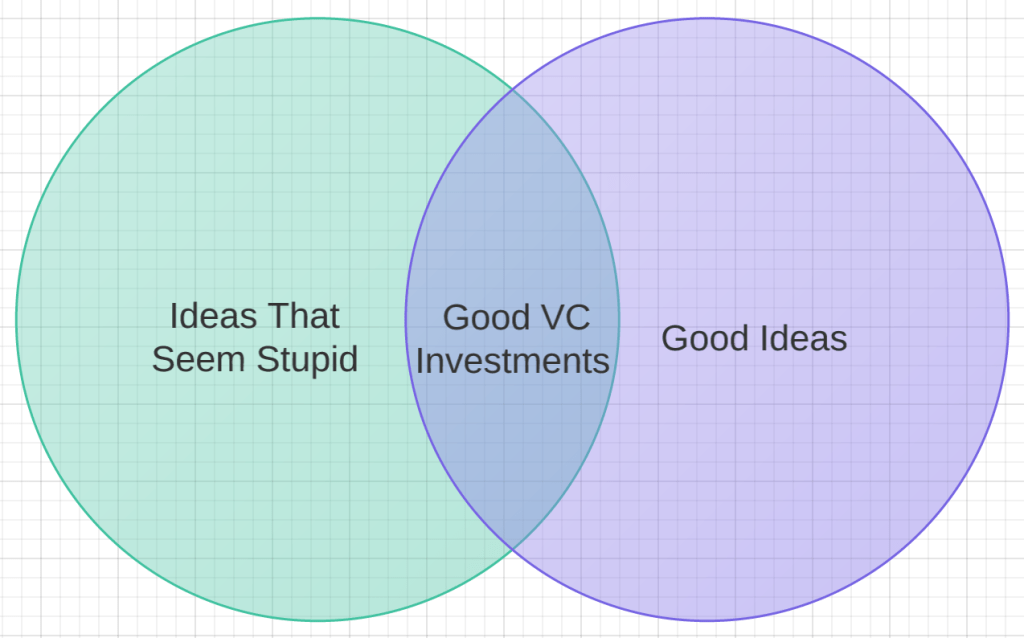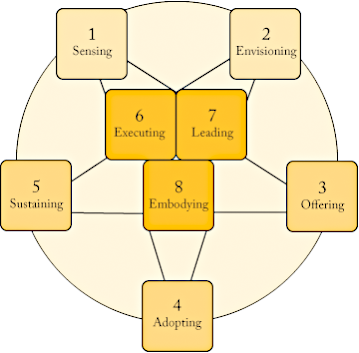Innovation is about finding a better way of doing something. Like many of the new development buzzwords (which many of them are over-used on many business documents), the concept of innovation originates from the world of business. It refers to the generation of new products through the process of creative entrepreneurship, putting it into production, and diffusing it more widely through increased sales. Innovation can be viewed as t he application of better solutions that meet new requirements, in-articulated needs, or existing market needs. This is accomplished through more effective products, processes, services, technologies, or ideas that are readily available to markets, governments and society. The term innovation can be defined as something original and, as a consequence, new, that “breaks into” the market or society.
Innoveracy: Misunderstanding Innovation article points out that there is a form of ignorance which seems to be universal: the inability to understand the concept and role of innovation. The way this is exhibited is in the misuse of the term and the inability to discern the difference between novelty, creation, invention and innovation. The result is a failure to understand the causes of success and failure in business and hence the conditions that lead to economic growth. The definition of innovation is easy to find but it seems to be hard to understand. Here is a simple taxonomy of related activities that put innovation in context:
- Novelty: Something new
- Creation: Something new and valuable
- Invention: Something new, having potential value through utility
- Innovation: Something new and uniquely useful
The taxonomy is illustrated with the following diagram.
The differences are also evident in the mechanisms that exist to protect the works: Novelties are usually not protectable, Creations are protected by copyright or trademark, Inventions can be protected for a limited time through patents (or kept secret) and Innovations can be protected through market competition but are not defensible through legal means.
Innovation is a lot of talked about nowdays as essential to businesses to do. Is innovation essential for development work? article tells that innovation has become central to the way development organisations go about their work. In November 2011, Bill Gates told the G20 that innovation was the key to development. Donors increasingly stress innovation as a key condition for funding, and many civil society organisations emphasise that innovation is central to the work they do.
Some innovation ideas are pretty simple, and some are much more complicated and even sound crazy when heard first. The is place for crazy sounding ideas: venture capitalists are gravely concerned that the tech startups they’re investing in just aren’t crazy enough:
Not all development problems require new solutions, sometimes you just need to use old things in a slightly new way. Development innovations may involve devising technology (such as a nanotech water treatment kit), creating a new approach (such as microfinance), finding a better way of delivering public services (such as one-stop egovernment service centres), identifying ways of working with communities (such as participation), or generating a management technique (such as organisation learning).
Theorists of innovation identify innovation itself as a brief moment of creativity, to be followed by the main routine work of producing and selling the innovation. When it comes to development, things are more complicated. Innovation needs to be viewed as tool, not master. Innovation is a process, not a one time event. Genuine innovation is valuable but rare.
There are many views on the innovation and innvation process. I try to collect together there some views I have found on-line. Hopefully they help you more than confuze. Managing complexity and reducing risk article has this drawing which I think pretty well describes innovation as done in product development:
8 essential practices of successful innovation from The Innovator’s Way shows essential practices in innovation process. Those practices are all integrated into a non-sequential, coherent whole and style in the person of the innovator.
In the IT work there is lots of work where a little thinking can be a source of innovation. Automating IT processes can be a huge time saver or it can fail depending on situation. XKCD comic strip Automation as illustrates this:

System integration is a critical element in project design article has an interesting project cost influence graphic. The recommendation is to involve a system integrator early in project design to help ensure high-quality projects that satisfy project requirements. Of course this article tries to market system integration services, but has also valid points to consider.
Core Contributor Loop (CTTDC) from Art Journal blog posting Blog Is The New Black tries to link inventing an idea to theory of entrepreneurship. It is essential to tune the engine by making improvements in product, marketing, code, design and operations.






5,158 Comments
Tomi Engdahl says:
https://hackaday.com/2023/03/26/caterpillar-like-soft-robot-with-distributed-programmable-thermal-actuation/
Tomi Engdahl says:
Glowscope Reduces Microscope Cost By Orders Of Magnitude
https://hackaday.com/2023/03/24/glowscope-reduces-microscope-cost-by-orders-of-magnitude/
As smartphones become more ubiquitous in society, they are being used in plenty of ways not imaginable even ten or fifteen years ago. Using its sensors to gather LIDAR information, its GPS to get directions, its microphone to instantly translate languages, or even use its WiFi and cellular radios to establish a wireless hotspot are all things which would have taken specialized hardware not more than two decades ago. The latest disruption may be in microscopy, as this build demonstrates a microscope that would otherwise be hundreds of thousands of dollars.
The microscope is a specialized device known as a fluorescence microscope, which uses a light source to excite fluorescent molecules in a sample which can illuminate structures that would otherwise be invisible under a regular microscope. For this build, the light is provided by readily-available LED lighting as well as optical filters typically used in stage lighting, as well as a garden-variety smartphone. With these techniques a microscope can be produced for around $50 USD that has 10 µm resolution.
Researchers Develop Glowscope that Turns Smartphone into Sensitive Microscope Normally Costing $100,000
https://www.goodnewsnetwork.org/minnesota-researchers-develop-glowscope-that-turns-smartphone-into-sensitive-microscope-normally-costing-100000/
Researchers looking to help students at school have used low-cost materials like theater lighting filters to turn regular smartphone cameras into fluorescent microscopes.
The resolution they say is around one-thousandth of a millimeter, but the cost reduction could literally be hundreds of thousands of US dollars.
Called the “Glowscope” a team at the biology department at Winona State University, Minnesota, designed the configuration to help with STEM outreach and education.
Tomi Engdahl says:
ADVERTISEMENT FEATURE Advertiser retains sole responsibility for the content of this article
‘Magic wands’ for laser tech
Versatile optical crystals are benefiting telecommunications and advancing quantum computing.
https://www.nature.com/articles/d42473-022-00465-8
Tomi Engdahl says:
We’re the New Renewables Harnessing wind on rooftops, converting body heat to electricity, and 3D-printed wireless amps in this month’s Big Picture
https://spectrum.ieee.org/thermoelectric-generators
Tomi Engdahl says:
Liquid Salts Bring Push-button Lenses Into Focus First-ever piezoelectric liquids could spark new technologies in optics and hydraulics
https://spectrum.ieee.org/piezoelectric-liquid
Tomi Engdahl says:
https://hackaday.com/2023/03/28/history-of-the-sparc-cpu-architecture/
Tomi Engdahl says:
2 high schoolers say they’ve found a proof for the Pythagorean theorem which mathematicians thought was impossible
https://www.insider.com/us-teens-claim-to-have-proved-pythagorean-theorem-thought-impossible-2023-3
Two US high schoolers believe they have cracked a mathematical mystery left unproven for centuries.
Calcea Johnson and Ne’Kiya Jackson looked at the Pythagorean theorem, foundational to trigonometry.
The American Mathematical Society said the teenagers should submit their findings to a journal.
Johnson and Jackson claim to have broken new ground by proving the theorem using trigonometry (it has already been proved extensively by other means).
In the abstract presented by Johnson and Jackson last week, the two teenagers gestured to this. They noted that the 1940 book “The Pythagorean Proposition” “flatly states” that there are no trigonometric proofs because they are “based upon the truth of the Pythagorean Theorem.”
They countered in their work that the claim “isn’t quite true.” The two claimed they were able to prove the theorem using the Law of Sines, another principle of trigonometry which does not rely on the Pythagorean theroem.
Their claim has not gone through the rigorous academic peer-review process — or been confirmed by other experts in the field.
Similar claims have also been made before by professional academics, both in a published journal and via the pre-print service arXiv.
Catherine Roberts, executive director for the American Mathematical Society, encouraged the young mathematicians to submit their findings to a journal where it can be assessed
Tomi Engdahl says:
https://www.iflscience.com/brand-new-fibonacci-sequence-discovered-by-accident-in-attempt-to-harvest-sunlight-62899
Tomi Engdahl says:
Would building a Dyson sphere be worth it? We ran the numbers.
Here’s the math behind making a star-encompassing megastructure.
https://arstechnica.com/science/2023/03/building-a-dyson-sphere-whats-the-payback-time-of-disassembling-a-planet/
Tomi Engdahl says:
https://arstechnica.com/science/2019/02/these-scientists-broke-12-microwaves-to-learn-how-grapes-create-plasmas/
Tomi Engdahl says:
https://scitechdaily.com/ingenious-photosynthesis-hack-paves-way-for-renewable-energy-breakthroughs/
Tomi Engdahl says:
https://www.cracked.com/pictofacts-366-23-personal-secrets-people-can-tell-by-looking-at-you
Tomi Engdahl says:
https://tekniikanmaailma.fi/james-webb-teleskooppi-naytti-mahtinsa-loysi-40-valovuoden-paassa-sijaitsevasta-eksoplaneetasta-ennatysmaaran-eri-molekyyleja/
Tomi Engdahl says:
Tällaista ainetta ei pitänyt olla olemassa – Kemistit loivat ennennäkemättömän rakenteen ja rikkoivat yli 50-vuotiset luulot
Tuomas Kangasniemi24.3.202307:15TIEDE
Uudessa yhdisteessä happiatomi tekee jotain, mitä ei ole koskaan ennen nähty
https://www.tekniikkatalous.fi/uutiset/tallaista-ainetta-ei-pitanyt-olla-olemassa-kemistit-loivat-ennennakemattoman-rakenteen-ja-rikkoivat-yli-50-vuotiset-luulot/e489a873-7609-4028-9312-26bb65b366c7
Kemistit ovat syntetisoineet ensimmäistä kertaa koskaan stabiilin kiraalisen molekyylin, jonka kiraalisuus perustuu ainoastaan stereogeeniseen happiatomiin
Tomi Engdahl says:
Scientists confirm quantum response to magnetism in cells
University of Tokyo scientists observe predicted quantum biochemical effects on cells.
https://bigthink.com/hard-science/scientists-confirm-cells-quantum-response-to-magnetism/#Echobox=1679446597
Tomi Engdahl says:
This Mirror Reverses How Light Travels in Time There are already applications in wireless, radar, and optical-computing
https://spectrum.ieee.org/time-reversal-interface
Tomi Engdahl says:
Home – 400 Years Ago A Samurai Wrote 20 Pieces Of Timeless Wisdom That Are Still Applicable Today
400 Years Ago A Samurai Wrote 20 Pieces Of Timeless Wisdom That Are Still Applicable Today
Musashi Miyamoto also known as Bennosuke Miyamoto was one of the greatest Japanese swordsmen who graced the 17th century. was an expert Japanese swordsman and ronin who served no master and held the record for the highest number of undefeated duels, sixty to be precise.
The Inagaki directed Samurai Trilogy starring Toshiro Mifune is based on his life.
https://japaninsides.com/400-years-ago-a-samurai-wrote-20-pieces-of-timeless-wisdom-that-are-still-applicable-today/
Tomi Engdahl says:
Lähes huoneoloissa toimiva suprajohtavuus on lopulta ehkä löytynyt – vastukseton aine tulee mullistamaan kaiken sähkötekniikan
Tuomas Kangasniemi18.3.202321:02TIEDE
Fyysikot sanovat löytäneensä huoneenlämmössä ja ”melkein” normaalipaineessa suprajohtavan aineen. Toiset kieltäytyvät uskomasta mitään.
https://www.tivi.fi/uutiset/lahes-huoneoloissa-toimiva-suprajohtavuus-on-lopulta-ehka-loytynyt-vastukseton-aine-tulee-mullistamaan-kaiken-sahkotekniikan/6cf41c24-307d-4928-a371-a5bbf7f3c721
Tomi Engdahl says:
https://www.vice.com/en/article/jgpqw3/why-doesnt-music-give-me-goosebumps-expert-opinion
Tomi Engdahl says:
https://futurism.com/the-byte/scientists-build-working-tractor-beam-although-its-comically-tiny
Tomi Engdahl says:
https://ellunkanat.fi/mth-riskeille/
Tomi Engdahl says:
https://www.popularmechanics.com/science/energy/a43391877/oxygen-ion-battery-could-change-energy/
Tomi Engdahl says:
https://futurism.com/the-byte/webb-telescope-dust-storm
Tomi Engdahl says:
Mathematicians discover shape that can tile a wall and never repeat
https://www.newscientist.com/article/2365363-mathematicians-discover-shape-that-can-tile-a-wall-and-never-repeat/
Aperiodic tiling, in which shapes can fit together to create infinite patterns that never repeat, has fascinated mathematicians for decades, but until now no one knew if it could be done with just one shape
Tomi Engdahl says:
Lyhennelmä: Suomessa kehitetty uusi mullistava materiaali mahdollistaa itse itsensä lataavan kännykän
Tapio Mainio20.3.202306:32TIEDE6GRATKAISUJA ILMASTONMUUTOKSEEN
Akateemikko Heli Jantunen kehittää tutkijaryhmineen Oulussa energiaa kerääviä keraameja, joita voidaan tulevaisuudessa hyödyntää muun muassa kännyköissä. Keraami kerää tarvitsemansa energian valosta, lämmöstä ja liikkeestä automaattisesti
https://www.tekniikkatalous.fi/uutiset/lyhennelma-suomessa-kehitetty-uusi-mullistava-materiaali-mahdollistaa-itse-itsensa-lataavan-kannykan/8b98d4d7-686b-478d-8983-004cff11048e
Tomi Engdahl says:
Time-delocalized variables violating causal inequalities
https://phys.org/news/2023-03-time-delocalized-variables-violating-causal-inequalities.html
A team of researchers from the Université libre de Bruxelles and the French National Center for Scientific Research have shown for the first time that an exotic type of process violating causal inequalities can be realized with known physics. A violation of a causal inequality proves under theory-independent assumptions that certain variables in an experiment cannot be assigned a definite causal order.
Tomi Engdahl says:
Amber Heard found to have the most beautiful face in the world, according to science
https://www.indy100.com/celebrities/amber-heard-most-beautiful-face-2659630416#Echobox=1679492532
As reported by Unilad, Dr Julian De Silva from the Centre for Advanced Facial Cosmetic & Plastic Surgery in London, used face mapping techniques to discover who has the most beautiful face in the world.
De Silva conducted his research back in 2016 and used the Greek Golden Ratio of Beauty of 1.618, otherwise known as ‘Phi.’ The ratio determines what is deemed to be the perfect proportion of facial features.
Going by this theory, Heard scored an impressive 91.85 per cent. Speaking to US Weekly at the time De Silva said: “The Greeks discovered that the ratio occurs everywhere in nature and for thousands of years it has been thought to hold the secret formula of the world’s most beautiful faces.”
“The Phi ratio of 1.618 has long been thought to hold the secret for beauty, but now with the computer mapping we can calculate how it applies to real women.”
Using the same techniques De Silva also discovered that Kim Kardashian had the best eyebrows, Scarlett Johansson had the best eyes and Emily Ratajkowski had the most perfect lips.
De Silva also created the ‘perfect’ face by using ” Amber Heard’s nose, Kim Kardashian’s eyebrows, Scarlett Johansson’s eyes, Rihanna’s face shape, Emily Ratajkowski’s lips, and Kate Moss’s forehead”.
Tomi Engdahl says:
Yksi vetytalouden pahimmista ongelmista ratkaistu magneeteilla: –253 °C nestevedyn tuotannon hukkaenergia kertaheitolla 40–50 % pienemmäksi
Tuomas Kangasniemi31.3.202309:42TIEDEENERGIAUUSIUTUVATKONEET JA LAITTEETSAKSAN TALOUS
Vedyn nesteytys vie energiaa, mutta uusi magneettinen kylmennys korjaa ongelman. Saksalaiset alkavat nyt rakentaa 5 tonnia päivässä tuottavaa koelaitosta.
https://www.tekniikkatalous.fi/uutiset/yksi-vetytalouden-pahimmista-ongelmista-ratkaistu-magneeteilla-253c-nestevedyn-tuotannon-hukkaenergia-kertaheitolla-4050-pienemmaksi/3a8569a4-0de4-4f85-ab2f-c5e5ca52f28d
Saksalainen Helmholz-tutkimuskeskus tiedottaa kehittävänsä menetelmää, jolla vety voidaan nesteyttää 40–50 prosenttia pienemmillä energiatappiolla kuin mikä on ollut tähän asti mahdollista. Perinteisen noin yhden kolmanneksen menetyksen sijasta puhuttaisiin siis 15–20 prosentin hävikistä.
Tomi Engdahl says:
Plants create ‘pop’ records in the studio when dehydrated or stems torn
This is the first evidence that stressed plants emit airborne sounds that can be detected over a meter away.
https://interestingengineering.com/science/plants-create-pop-records-when-dehydrated-stems-torn
Tomi Engdahl says:
Simple electrical circuit learns on its own—with no help from a computer
System sidesteps computing bottleneck in tuning artificial intelligence algorithms
https://www.science.org/content/article/simple-electrical-circuit-learns-its-own-no-help-computer
CHICAGO—A simple electrical circuit has learned to recognize flowers based on their petal size. That may seem trivial compared with artificial intelligence (AI) systems that recognize faces in a crowd, transcribe spoken words into text, and perform other astounding feats. However, the tiny circuit outshines conventional machine learning systems in one key way: It teaches itself without any help from a computer—akin to a living brain. The result demonstrates one way to avoid the massive amount of computation typically required to tune an AI system, an issue that could become more of a roadblock as such programs grow increasingly complex
Tomi Engdahl says:
Massive ocean discovered beneath the Earth’s crust containing more water than on the surface
https://www.indy100.com/science-tech/ocean-beneath-earth-crust-ringwoodite-2659707032#Echobox=1680176300
It feels like there have been staggering science stories emerging every other day recently, all of which have blown our tiny little minds.
First, there was the discovery of a terrifying black hole pointing right at us, then there was a huge hole found in the sun and a missing continent found after going missing for 375 years.
Now, people are only just realising that there’s a massive ocean hidden under the Earth’s crust.
It turns out there’s a huge supply of water 400 miles underground stored in rock known as ‘ringwoodite’.
Tomi Engdahl says:
https://quotefancy.com/quote/1765998/Edward-A-Murphy-Jr-If-there-are-two-or-more-ways-to-do-something-and-one-of-those-ways
Tomi Engdahl says:
Using bacteria to convert CO2 in the air into a polyester
https://phys.org/news/2023-03-bacteria-co2-air-polyester.html
Tomi Engdahl says:
Scientists Create 3D-Printed Cheesecakes Cooked To Perfection With Lasers
The cakes don’t look like they’ll win The Great British Baking Show any time soon, however.
https://www.iflscience.com/scientists-create-3d-printed-cheesecakes-cooked-to-perfection-with-lasers-68071
Tomi Engdahl says:
First Demonstration of Energy Teleportation
It’s not just information that can move from one point in the universe to another, without passing through the space in between.
https://www.discovermagazine.com/the-sciences/first-demonstration-of-energy-teleportation
Tomi Engdahl says:
The First Complete Brain Map of an Insect May Reveal Secrets for Better AI
https://singularityhub.com/2023/03/14/new-map-captures-every-connection-in-an-insects-brain-revealing-secrets-for-better-ai/
Breakthroughs don’t often happen in neuroscience, but we just had one. In a tour-de-force, an international team released the full brain connectivity map of the young fruit fly, described in a paper published last week in Science. Containing 3,016 neurons and 548,000 synapses, the map—called a connectome—is the most complex whole-brain wiring diagram to date.
“It’s a ‘wow,’” said Dr. Shinya Yamamoto at Baylor College of Medicine, who was not involved in the work.
Tomi Engdahl says:
Texas A&M University scientists have been working with metal-free, water-based battery electrodes, and they’re finding that the difference in energy storage capacity is as much as 1,000%….
https://electrek.co/2023/03/31/storage-capacity-water-based-batteries/
Tomi Engdahl says:
MIT’s Barry Duncan demonstrates the power of writing in reverse
The MIT Press Bookstore staff member charms and amazes with his talent for writing in palindrome — or prose that reads the same forward and backward.
https://news.mit.edu/2023/barry-duncan-palindromes-writing-reverse-0320
Words have always played a central role in Barry Duncan’s life. He’s worked in bookstores for more than 40 years, reads often, and has tried his hand at writing novels, children’s books, song lyrics, and plays.
But it wasn’t until he stumbled onto the book “An Almanac of Words at Play” that Duncan realized words could go backwards. The discovery, which he made in the early 1980s, set him on a course he would follow for decades. For fun, and then out of habit, he began reversing words he saw in print, noticing words that took on new meaning when flipped, and writing sentences that could be read backward and forward — palindromes.
Tomi Engdahl says:
https://www.bleepingcomputer.com/news/microsoft/10-year-old-windows-bug-with-opt-in-fix-exploited-in-3cx-attack/
Tomi Engdahl says:
The fifth force: Is there another fundamental force of nature?
Scientists in Hungary claim to have found a new particle that reveals a fifth force of nature.
https://astronomy.com/news/2020/03/the-fifth-force-what-is-it
Tomi Engdahl says:
Behold the Magnetar, nature’s ultimate superweapon
Their magnetic fields—the strongest we’ve observed—could melt you from 1,000 km away.
https://arstechnica.com/science/2022/06/behold-the-magnetar-natures-ultimate-superweapon/
Tomi Engdahl says:
Engineers Built a New Kind of Concrete 2x Stronger Than the Real Thing
The secret ingredient? Potato starch.
https://www.popularmechanics.com/space/moon-mars/a43339577/new-concrete-twice-as-strong/
Tomi Engdahl says:
A new 13-sided shape is the first example of an elusive “einstein” — a single shape that can be tiled infinitely without repeating a pattern.
Newly discovered ‘einstein’ tile is a 13-sided shape that solves a decades-old math problem
By Paul Sutter published 2 days ago
https://www.livescience.com/newly-discovered-einstein-tile-is-a-13-sided-shape-that-solves-a-decades-old-math-problem?utm_medium=social&utm_content=livescience&utm_source=facebook.com&utm_campaign=socialflow
A new 13-sided shape is the first example of an elusive “einstein” — a single shape that can be tiled infinitely without repeating a pattern
Look carefully! Mathematicians have invented a new 13-sided shape that can be tiled infinitely without ever repeating a pattern. They call it “the einstein.”
For decades, mathematicians wondered if it was possible to find a single special shape that could perfectly tile a surface, without leaving any gaps or causing any overlaps, with the pattern never repeating.
In 1961, mathematician Hao Wang conjectured that aperiodic tilings, or tilings that never become a repeating pattern, were impossible. But his own student, Robert Berger, outwitted him, finding a set of 20,426 shapes that, when carefully arranged, never repeated. He then slimmed that down to a set of 104 tiles. That means that if you were to buy a set of those tiles, you could arrange them on your kitchen floor and never find a repeating pattern.
In the 1970s, Nobel prize-winning physicist Roger Penrose found a set of only two tiles that could be arranged together in a nonrepeating pattern, now known as a Penrose tiling.
Since then, mathematicians around the world have searched for the aperiodic tiling holy grail, called “the einstein.” The word doesn’t come from the famous Albert but from the German translation of his last name: one stone.
Tomi Engdahl says:
Why A Community Hackerspace Should Be A Vital Part Of Being An Engineering Student
https://hackaday.com/2023/03/31/why-a-community-hackerspace-should-be-a-vital-part-of-being-an-engineering-student/
Tomi Engdahl says:
https://hackaday.com/2023/04/05/how-tattoos-interact-with-the-immune-system-could-have-impacts-for-vaccines/
Tomi Engdahl says:
https://hackaday.com/2023/04/03/largest-ever-hydrogen-fuel-cell-plane-takes-flight/
Tomi Engdahl says:
Ex Google Engineer Claims Immortality Is Attainable By 2030 With Help Of…
Mr Kurzweil has made some accurate predictions in the past, including forecasting that a computer would beat humans in chess by 2000.
https://www.ndtv.com/feature/ex-google-engineer-predicts-nanobots-will-make-humans-immortal-by-2030-3914511
Tomi Engdahl says:
Physics Breakthrough: Researchers Overcome Long-Standing Limitation of First Law of Thermodynamics
https://scitechdaily.com/physics-breakthrough-researchers-overcome-long-standing-limitation-of-first-law-of-thermodynamics/
Physicists at West Virginia University have overcome a long-standing limitation of the first law of thermodynamics.
The first law of thermodynamics states that energy can neither be created nor destroyed, but it can be converted into different forms.
Developed in the 1850s, the first law of thermodynamics is only valid for systems in which a temperature can be properly defined, a state known as equilibrium. As an example, when combined, a cup of cold water and a cup of hot water will eventually reach a warm temperature between them. This warm temperature is the equilibrium. However, when the hot and cold water have not yet reached that endpoint, the water is out of equilibrium.
The work of Cassak and Barbhuiya fills in the blanks on this limitation.
“We generalized the first law of thermodynamics for systems that are not in equilibrium,” Cassak said. “We did a pencil and paper calculation to find how much energy is associated with matter not being in equilibrium, and it works whether the system is close to or far from equilibrium.”
Their research has numerous potential applications. The theory will help scientists understand plasmas in space, which is important for preparing for space weather. Space weather occurs when huge eruptions in the solar atmosphere blast superheated plasma into space. It can cause problems like power outages, interruptions to satellite communications, and the rerouting of airplanes.
“The result represents a really large step of our understanding,”
Tomi Engdahl says:
Physicists Created ‘Slits In Time’ and Discovered ‘Unexpected Physics’
https://science.slashdot.org/story/23/04/03/2142245/physicists-created-slits-in-time-and-discovered-unexpected-physics
Scientists have discovered “unexpected physics” by opening up “slits” in time, a new study reports, achieving a longstanding dream that can help to probe the behavior of light and pioneer advanced optical technologies. The mind-boggling approach is a time-based variation on the famous double-slit experiment, first performed by Thomas Young in 1801, which opened a window into the weird probabilistic world of quantum mechanics by revealing the dual nature of light as both a particle and a wave. The new temporal version of this test offered a glimpse of the mysterious physics that occur at ultrafast timescales, which may inform the development of quantum computing systems, among other next-generation applications.
Physicists Created ‘Slits in Time’ and Discovered ‘Unexpected Physics’ in Experiment
https://www.vice.com/en/article/dy38xk/physicists-created-slits-in-time-and-discovered-unexpected-physics-in-experiment
Scientists have achieved a “temporal analogue” to the famous double-slit experiment that could lead to new optical technologies.
Now, scientists led by Romain Tirole, a PhD student studying nanophotonics at Imperial College London, have created a “temporal analogue of Young’s slit experiment” by firing a beam of light at a special metamaterial called Indium Tin Oxide, according to a study published on Monday in Nature Physics.
The breakthrough paves the way toward new research into the enigmatic properties of light, and the many emerging technologies that rely on optical phenomena. Tirole and his colleagues are especially eager to try to repeat the experiment with a time crystal, a very strange quantum system that has revolutionized many fields in physics.
Tomi Engdahl says:
New atomic-scale understanding of catalysis could unlock massive energy savings
https://phys.org/news/2023-04-atomic-scale-catalysis-massive-energy.html
In an advance they consider a breakthrough in computational chemistry research, University of Wisconsin–Madison chemical engineers have developed model of how catalytic reactions work at the atomic scale. This understanding could allow engineers and chemists to develop more efficient catalysts and tune industrial processes—potentially with enormous energy savings, given that 90% of the products we encounter in our lives are produced, at least partially, via catalysis.